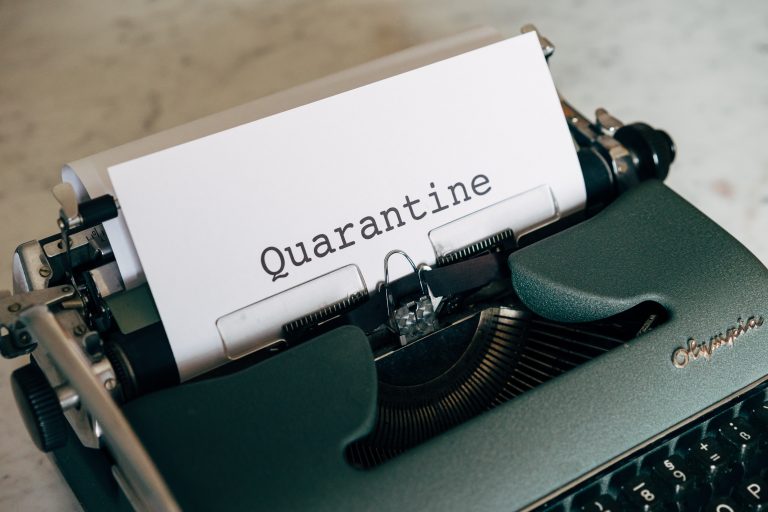The last decade was dominated by talk of mental illness in young people – what causes it, who has it, and how do we solve it.
A major cause of it, to our minds, is largely due to an ocean of misunderstanding around the topic of trauma.
Underneath almost all mental ill-health is unresolved trauma, and trauma can be treated.
When we think of trauma, we think of war veterans coming home and struggling with normal life, we think of rape victims, we think of those caught up in terrorist attacks. Of course, this is trauma.
This type of trauma, the more widely known trauma, we call “Big T Trauma” and it’s technicallyndefined as something happening to us where we feel that our physical life is in danger.
Some of the patients we work with have “Big T Trauma”. But what we have found is that almost all patients struggling with mental illness also have another type of trauma. It is called Developmental Trauma, or “little t trauma.” It happens during our developmental years as we grow up.
Surrounding “little t trauma” and its link with mental health is this ocean of misunderstanding.
There is a notion that “trauma happens to other people.” We actually all have some trauma, some developmental trauma. Some of us have more of it than others, but we all have some.
Bessel van der Kolk, one of the leading trauma experts, called developmental trauma a “hidden epidemic”. And he is right.
However horrid it might sound, we can probably all imagine a child who has been physically, sexually, and emotionally abused. We picture them, perhaps curled in on themselves, pale, thin – “traumatised”. They might have parents who are alcoholics.
They might have been beaten, sworn at, and shouted at daily, with their basic needs not even being met.
As we think more about these poor children, we can understand that they would have trauma, developmental trauma, the “little t trauma,” and our hearts might bleed for them.
But many people who suffer with mental illness are not born into a family with that level of dysfunction.
So what is going on?
The answer is that there is a gaping hole in the true understanding of emotional abuse and neglect.
For decades, for generations, we have been emotionally abused and neglected by our parents, to one degree or another, without anyone realising that it is happening.
No parent sets out to emotionally abuse and neglect their child. Well, perhaps a teeny 0.01 percent do. Every parent we have ever met sincerely believes that how they raise their children is absolutely the best for their child. And they most likely believe that how they were raised was also from a place of putting the children first. No one is perfect—lord forbid, that would bring its own set of problems for a child.
To keep it simple, I look at this kind of neglect in terms of the emotional needs of any child. A child needs to feel Seen, Soothed, Safe, and Secure – the 4Ss. In order for a child to emerge as an adult with a minimum amount of developmental trauma, they need to have felt those 4Ss enough of the time during their childhood.
Let’s think back to our own childhood. Did we receive those 4Ss enough of the time?
Did we feel seen by our parents? By seen, I mean really connected with for who we were as an individual, rather than just a family member, or an offspring. Did we have a parent who would take the time to get to know us, to hear our opinion, to value to it, and to value us?
Were we soothed when we felt upset? Did we have a parent who would scoop us up in their arms when we felt sad or emotional, embrace us, rock us, and soothe us until our upset subsided. Or were we told to get on with it and stop crying? “Big girls don’t cry, boys don’t cry.”
Did we feel emotionally safe to go to our parents with anything that was going on in our lives that felt difficult? If we tried to do that, did they listen, see us, and hear us? Or did we receive a message—said or unsaid—that we just needed to get on with it alone? Generally, if we feel seen and soothed, we are probably going to feel emotionally safe.
Did we feel secure? Did we have a stable home that felt like somewhere we could go back to, that felt like home, that we could share with our friends, where we had a sense of security?
Many of us, when we take an honest look at the above, will answer “No, I did not.”
If we didn’t feel enough of those 4Ss enough of the time, then we are going to have some developmental trauma.
So how does this manifest in our daily lives as we grow up? What does it look like? Depending on our personalities, our character makeup, and the type or frequency of the trauma, there are various ways this developmental trauma manifests in us. PTSD, alcoholism, eating disorders, anxiety, depression, smoking, antisocial behaviour, numbness, self-harm, suicidal ideation, and even suicide itself, are some of these ways.
Less well-known manifestations are feeling negatively towards ourselves, people pleasing, workaholism, over-exercising, narcissism, feelings of shame, rage, caretaking, imposter syndrome.
All of these are signs of developmental trauma. Because trauma doesn’t just come from the horrid things that happen to us, it also comes from the loving things that didn’t happen for us.
But we all love our children, right? Of course we do. And we were loved by our parents before us too. All parents love their children. But the missing piece is that we don’t all know how to be unconditionally loving toward our children because we don’t fully understand exactly what all children need.
Because it’s not just about love. It is also about respect.
And when we do not feel seen, soothed, safe, or secure enough of the time, we are not being respected for the extraordinary human being that we are, in all of its wholeness. A lack of that respect and unconditional love, very sadly, results in the child feeling emotionally abused or neglected.
We need to be looking at everyone, from a young child, to teenagers, to young adults, to grown adults—the “little t trauma” affects all of us.
And instead of asking the question “What is wrong with this person,” we need to be asking the question “what happened to this person?”
Because the answer lies somewhere in those 4Ss—or lack thereof. And once we know that, we can help them to heal.

Author: Lucinda Gordon Lennox
Lucinda works at The Recovery Centre, which has clinics in London and Edinburgh



